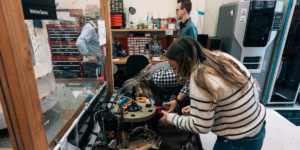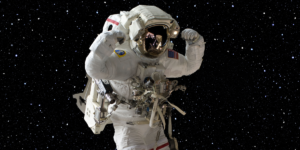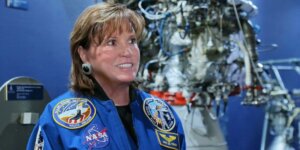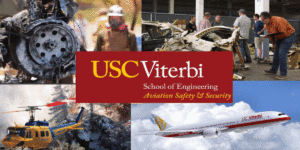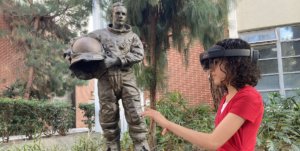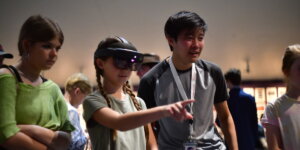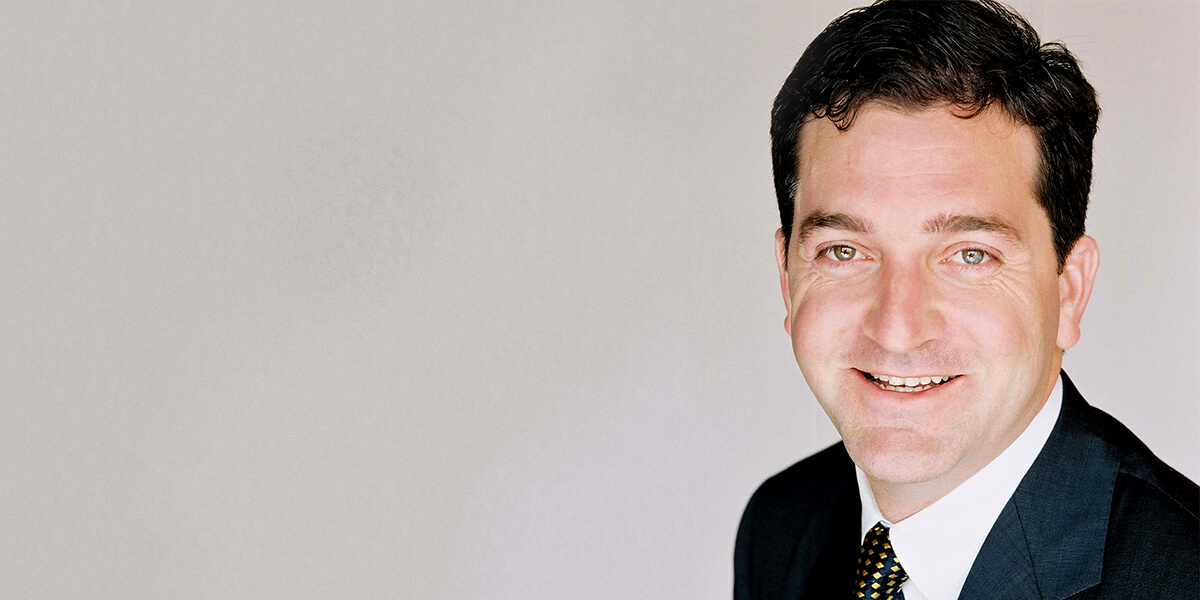
Michael Kezirian (Photo/Courtesy of Michael Kezirian)
Michael Kezirian, adjunct professor of astronautics practice at the USC Viterbi School of Engineering, was just a toddler when astronauts Neil Armstrong and Buzz Aldrin walked on the moon in July 1969.
Kezirian’s earliest NASA memories are of the Space Shuttle program: the announcement of the first Shuttle astronaut class, the first Shuttle launches and landings, including missions that touch down California. The program held the promise to make space exploration accessible to everyone.
Today, as the president of the International Space Safety Foundation, Kezirian promotes safety as an unequivocal tool to realize that dream.
A chemical engineer by training and a rocket scientist by experience on satellite and human space flight programs, Kezirian has worn many hats across and within the astronautics and energy industries, advocating for safety, environmental sustainability, and accessible space exploration.
From designing safe spacecraft and critical hardware for the International Space Station for Boeing, to managing mission operations on satellite and the Space Shuttle Program to teaching future leaders at USC Viterbi about safe space design and operations and spacecraft dynamics, to founding his own clean energy technology company, Kezirian has long committed himself to educating the experts and the public on the importance of centering conversations about space exploration around safety and risk.
People tend to think that rules and regulations restrict us from doing interesting things, says Kezirian, when really, they enable us to do them, by making them safe and reliable.
Writer Cheyenne Gaima probed Kezirian on his thoughts on space safety and how prioritizing safety design measures and practices opens the door for accessible commercial space exploration.
Describe a day in the life of a rocket scientist
On a day to day, I could be doing anything from performing engineering analyses to writing flight procedures. I may be performing hazard assessments for space systems or working on the Journal of Space Safety Engineering. It really depends on the day.
What exactly is space safety?
Safety, in general, is understanding the hazards associated with what you’re doing and then implementing the mitigations to those risks to ensure they’re performed at a level that is ‘As Low As Reasonably Achievable’ or ALARA.
Space safety, then, is taking additional measures and establishing safety procedures to avoid or tolerate any hardware failure, software fault and human error and also to mitigate harmful consequences when the faults occur.
Space safety gets a really bad rap because people think that we’re telling them they can’t go fly until they do X, Y and Z. In reality, we’re trying to convey that when you understand X, Y and Z that you can truly do so in a manner that is ALARA — namely the principles and procedures conducive to safe exploration. I can invest in the technology and systems that make the systems reliable while also protecting the uninvolved public and the scientists involved in a mission.
Another realm of space safety relates to operating in the current space environment. Earth orbit has more than a million pieces of space junk, or debris, left over from decades of operating in space. As these objects persist in orbit, they collide with one another, creating event more object. These scattered pieces can also collide with operational satellites including human spacecraft, with potentially catastrophic consequences for astronauts and their vehicles.
Like “Wall-E?”
Yes, except imagine not being able to leave a polluted Earth because the atmosphere was too clogged up, too.
Why is it important?
Like any other safety-critical, high-tech industries, you would never operate, say, a nuclear plant unless you understood the risk and had sufficient controls in place to make sure it was safe. People would never get into airplanes if they weren’t certified as safe and if there weren’t safety protocols in case of an emergency.
The space flight industry is no different. Except there doesn’t yet exist a central regulatory body for commercial space flight, unlike, say the Federal Aviation Administration (FAA). Generally, people don’t like the idea of rules and regulations, but at the same time, some rules and regulations or necessary to keep people safe.
Instead of a myriad of government regulations on all aspects of spaceflight, the International Space Safety Foundation is advocating for the creation of a Space Safety Institute (SSI) which would develop and maintain consensus space standards. The SSI would then give space companies the opportunity to vet their designs and planned operations against these standards. This process would mirror that of NASA safety reviews. Lessons learned from past experiences can be applied to protect future missions.
As an aside, following the 2010 Macondo disaster, the Presidential Commission recommended a similar approach of an industry-driven safety review process for offshore oil exploration.
How far off is civilian commercial space travel?
Twenty years ago, the only people launching human space rockets were government space agencies. Now, there are a multitude of commercial spaceports provding opportunities to launch missions. Recently, some big names in tech like Richard Branson, Jeff Bezos, and Elon Musk have pursued their own visions of taking humans to space.
The commercial sector is finally coming together, with the help and assistance of NASA. There are private companies developing space stations. NASA is assisting with contracts to add modules to the ISS. These companies have plans for their own independent habitats. The reduced launch cost is enabling a market to establish with actual destinations. Wealthy individuals are spurring the creation of the market, which are making the opportunity more and more accessible to everyone.
What’s the biggest project you’ve consulted on?
I am fortunate to have been able to participate on a number of challenging and important projects. I have supported a broad range of program life cycles, ranging from assessments to support design trades for program concept studies, to space launches and early operations to end of life support. One critically important project was the International Space Station’s Nitrogen Oxygen Recharge System (NORS). The NORS program provided critical gases for life support and environmental control. The ISS relied on Space Shuttle for these gases; with Shuttle retirement, a new system was needed and the timeline for development was essential to ensure continued ISS operation.
Currently, I have been working with the FAA on their new streamlined launch certification requirements, referred to as Part 450, and the process for Launch Collision Assessment, with orbital debris.
What scares you the most about the future of space travel?
Human beings are inherently inquisitive and explorative; it’s our curiosity to dream that allows us to reach the next frontier. My biggest fear is that there are some cavaliers in the industry that equate adventure with risk. Not if, but when an accident happens, and if there has not been adequate protections and foresight, I’m afraid that people may question whether space travel is something that should be permitted.
What I try my hardest to communicate, though, is that when we prioritize advancing space safety engineering research, education and applications, we can account for and effectively control these risks.
I am also worried about the orbital debris environment and how the growing population of space debris objects may hamper our ability to access space in the future. I personally am worried about the integration of the space domain and airspace and am working to protect all users of the airspace from entering space debris.
What excites you the most?
You know, I think it’s very odd when people don’t want to work in space. (laughter)
I am truly excited that we have the opportunity to put boots on the moon again. Not only would this be amazing for human exploration, but there would be opportunities to do amazing science. Compared with 50 years ago, we have many new questions to answer and new challenges to overcome. Imagine the equipment we would take to perform biological, fluid mechanics and combustion experiments? Imagine what geological field work our astronauts could conduct? Thinking about these answers, who wouldn’t be excited about that!
Published on May 18th, 2022
Last updated on May 19th, 2023




